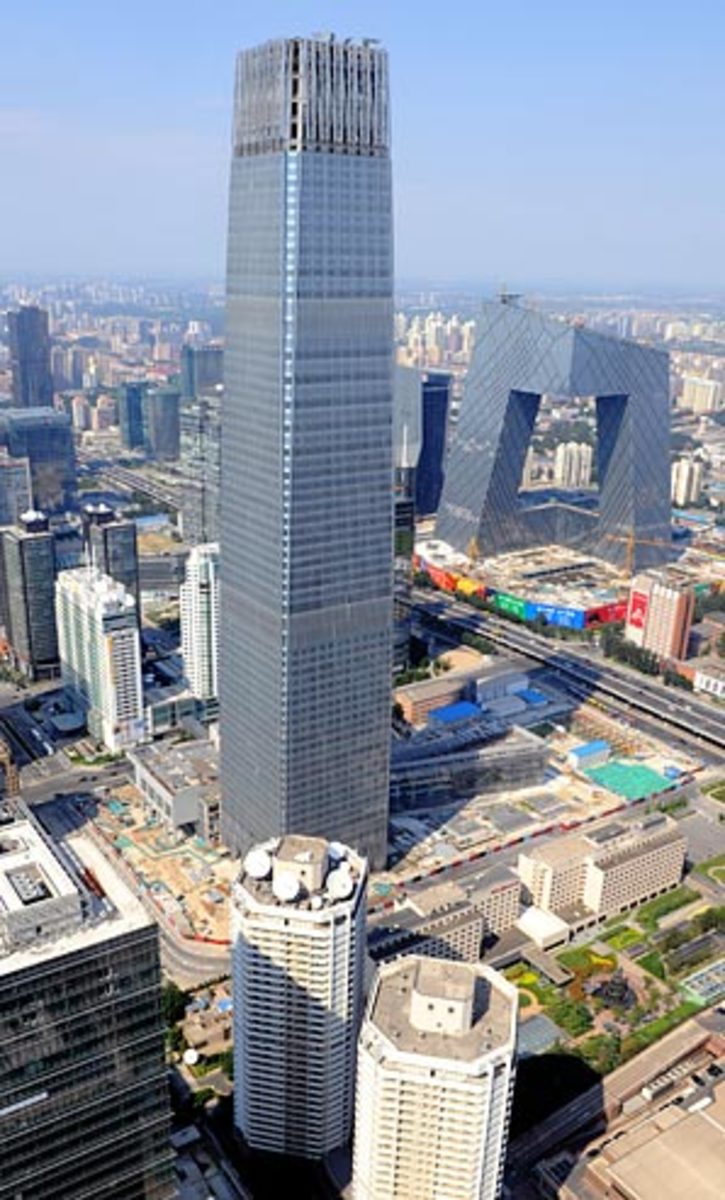Part 3: Testing Beijing's air quality
When Chinese officials and the IOC declared the air in Beijing clean for the Games -- IOC president Jacques Rogge said the sun was simply hiding behind fog from "heat and humidity," never mind that, some days, there was less than 60 percent relative humidity -- it gave a seal of approval to pollution-control measures that Beijing has ramped up over years in preparation for the Olympics. And in the last few days, the fervor over Beijing's air pollution has subsided, as pea soup skies gave way to a pleasant azure backdrop, the first of the Games.
Truly, Beijing should be commended for it's efforts: Half the cars have been removed from the roads each day of the Olympics; pollution construction sites and factories have been shuttered; and, long before the Games, Chinese officials started switching businesses from coal power to natural gas. But dramatic economic booms, like the one China is still undergoing, are never easy on the environment, and a critical look at some of the pollution stats coming out of Beijing suggest that Chinese enviromental organizations have manipulated some data to make the city appear cleaner than it is.
Washington D.C.--based environmental consultant Steven Q. Andrews has been taking that critical look. Andrews's curiosity was first piqued by a statistical anomaly: He noticed that China was reporting an inordinate number of days just below the level of particulate matter pollution that is deemed problematic, and very few days just over that arbitrary level. (An "Air Pollution Index" rating of 50 is a safety target established by the World Health Organization for various forms of pollution, including particulate and carbon monoxide, and 150 is the target for developing countries. Beijing gets the rating by averaging pollution data from 27 stations around the city and has set a target of 100 during the games.)
As Andrews delved deeper into Beijing's air data, he found out that some of the air pollution monitors in Beijing were moved in 2006, and the result was a fictitious relative improvement in the city's air.
Specifically, two of the monitors getting the highest readings were near areas with high traffic, and both of those stations were removed and placed with stations farther from the road. At the start of 2006, the Chinese State Environmental Protection Administration issued new guidelines for air monitoring. For roadways with an average of 3,000 vehicles per day, monitoring equipment should be at least 25 meters away from the road. For roads with an average of 15,000 vehicles a day, monitoring stations should be at least 80 meters away, and for roads with 40,000 vehicles per day, at least 150 meters away. "They're adding non-transportation stations and calling it an improvement in air quality," Andrews says.
There seems little inherent problem with moving monitoring equipment away from the road, as one location for air monitoring is as arbitrary as another; but in Beijing's case, beginning in 2006, the city could no longer compare air measurements to historical data. So every time Du Shaozhong, minister of Beijing's Environmental Protection Bureau, declares that Beijing's efforts to clear the air paid off when the capital city hit its "blue sky days" target in 2007, he is comparing data from the new monitoring stations -- further from pollution sources on the road -- to data from the original locations.
Additionally, the data themselves, at least during the Olympics, are in question. The BBC has been doing independent monitoring of air quality, and on the day of opening ceremonies, when the Beijing EPB reported a particulate pollution API just under 100, the BBC recorded levels nearly three times that high.
Beijing deserves great credit for enacting traffic controls and closing dirty construction sites and factories during the Games, but there is evidence to suggest that officials are still far more concerned with public perception than with helping people to understand the city's pollution, which largely comes from industrial provinces south of the city, not from Beijing itself.
In the days before the Games, one could see some of the internal discussions about how to present pollution data taking place in real time on the Beijing EPB's website. A few weeks before opening ceremonies, the EPB's site assigned qualifying phrases to various API's: 0-50 was "excellent." Days later, 0-50 was "good," and then it became "very slight." Now, with the Olympics in full swing, 0-50 is a simple and unedifying "Level I."






